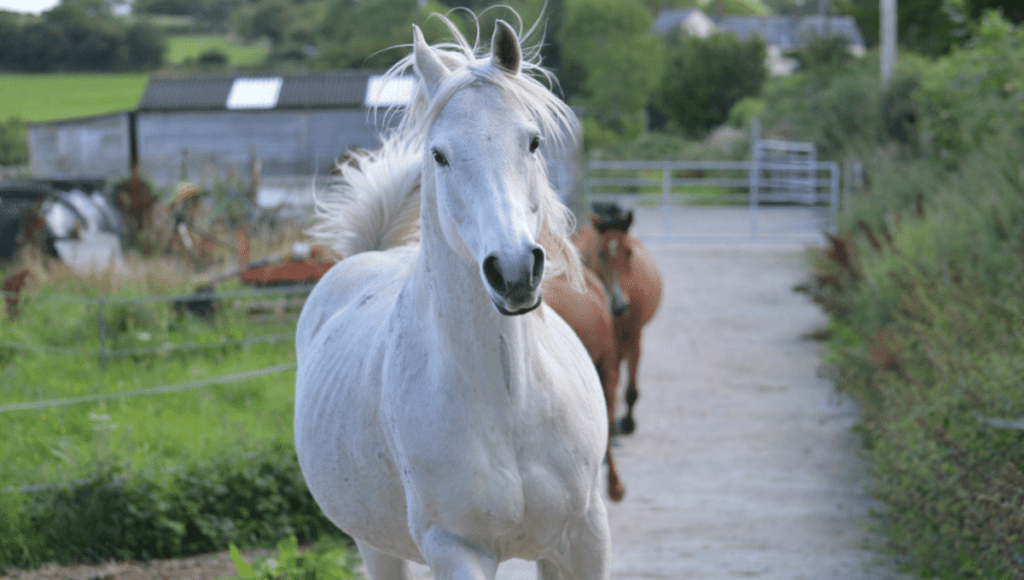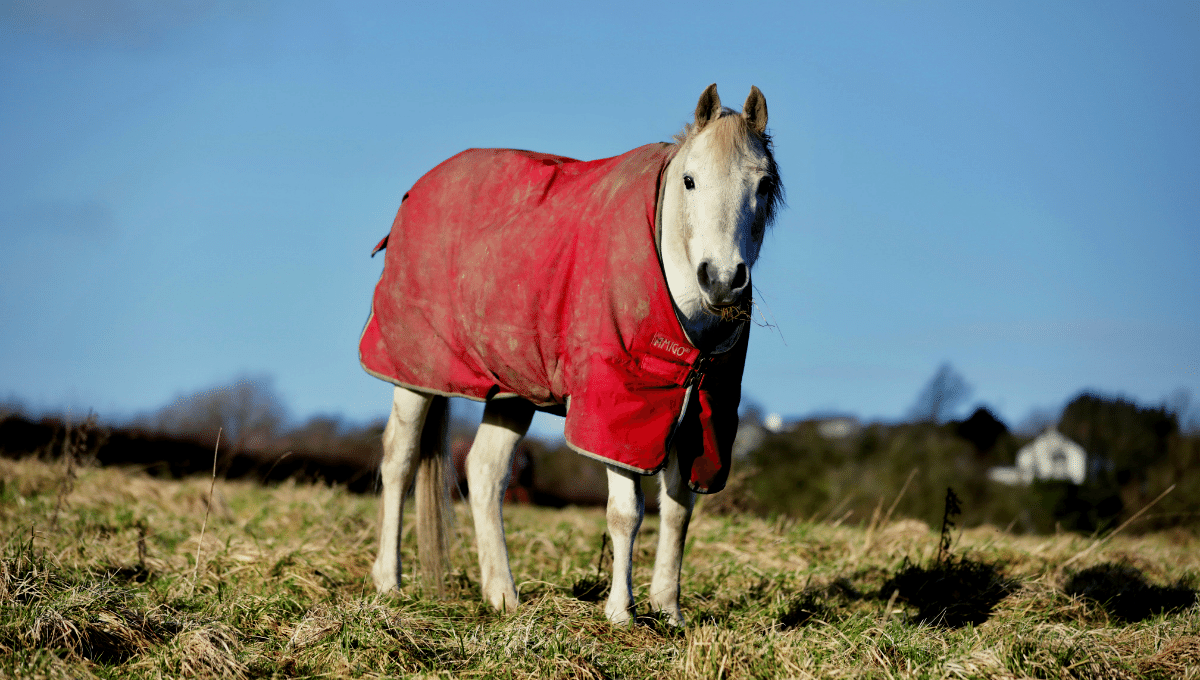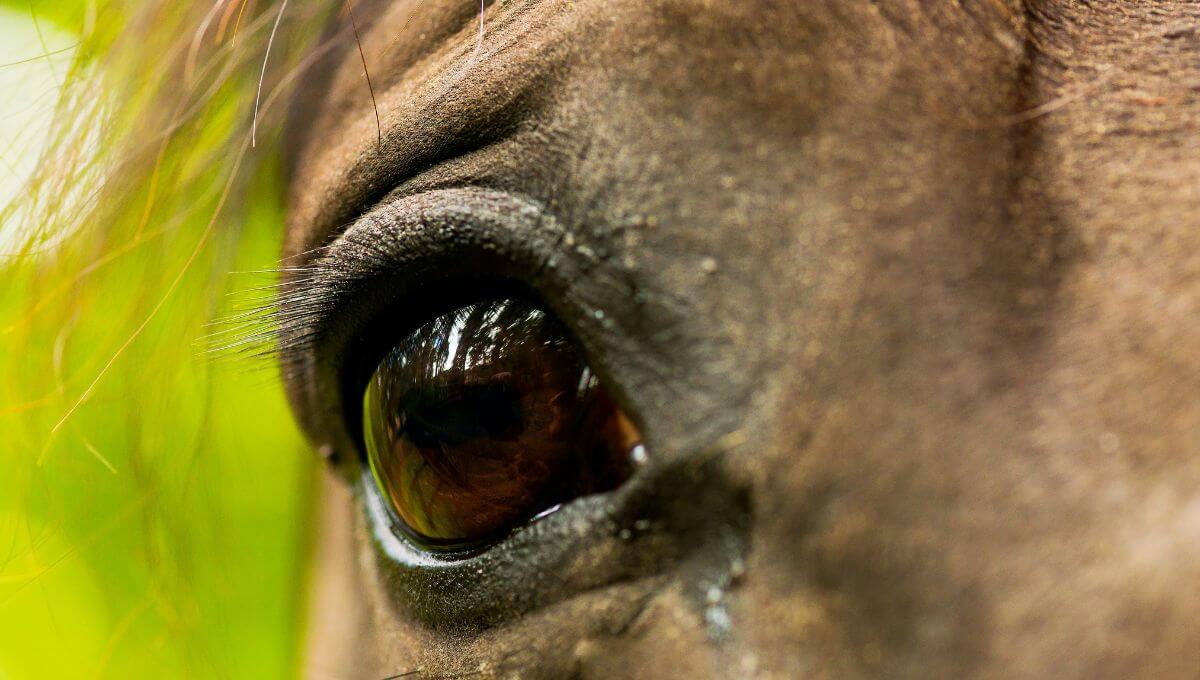All information was taken and obtained from attendance at ECIR No Laminitis conferences. If you want to seek more help and facts about identifying and managing Cushing’s and IR in horses please contact us.
Managing Cushings Disease
Equine Cushing’s disease is controlled by the medication Pergolide, this is only available through a veterinary prescription and is generally only prescribed after blood testing has shown abnormally high levels of the hormone ACTH. In the UK Pergolide is now marketed under the brand name of Prascend.
Regular follow up testing of ACTH is vital to determine if the dose of Pergolide is correct, it may be excessive or adequate. Only a blood test will allow you to determine the effectiveness of the dose. Your vet can advise you on this but make sure they understand how to handle the sample. An incorrectly handled sample will lead to a false negative.
Some equines may need a higher pergolide dose during the autumn and winter but can return to their normal maintenance dose in the spring. This is because there is a seasonal rise of ACTH starting around August and ending around the end of October. This is associated with the change of coat from summer to winter. This is a particularly good time of year to test for Equine Cushing’s because horses which are borderline or a low high may show up as being far worse during this period. Some horses seem to be more affected by low levels than others so wherein one horse a level of 200 might not have caused laminitis, in another, a level of 100 may do so. Not enough is known yet about why these variations occur. The seasonal normal high from November to July should be no more than 28 but during August, September and October this is adjusted to 48 as all horses display a seasonal natural seasonal rise. Dr Kellon suggests that where a horse is symptomatic, crestyness, increased water consumption and sensitive feet, then if the test shows a level above 35 Pergolide should be tried.
Concerning dosage, your vet will be able to advise you and you can seek more information from the ECIR group themselves. Some horses display depressed appetite and depression when either starting pergolide or needing to go onto higher doses. This effect, called the ‘Pergolide Veil’, can be supported by using a product called APF. This product is a powerful adaptogenic preparation well known for boosting appetite and maintaining vitality. No other nutrient benefits your horse in this way.
The herb Chaste Tree Berry (Agnus Castus available in several different forms) may control the symptoms for some horses, especially if there is an element of excessive prolactin production. So you might see an improvement in coat quality and coat shedding but this herb does not control ACTH levels so it is very important to maintain regular blood test checks to make sure that ACTH levels are not rising. The higher the ACTH level the greater the threat of laminitis. Most Equines with a definite diagnosis of Equine Cushing’s will eventually need to be maintained on Pergolide, an adaptogenic herb preparation which Dr Kellon recommends be used to avoid the ‘veil’.
Cushing’s disease compromises the immune system and there is a suggestion that long term absorption of high levels of iron from forage contributes to worsening PPID. This means that an approach that determines the correct ratios of minerals to add to the diet can be very helpful in maintaining and supporting health. This can be done either by feeding a forage focussed mineral supplement or even better testing forage and determining which minerals need to be matched to that to balance according to ratios using a bespoke recipe. A broad-spectrum supplement is unlikely to be as successful as anti-oxidant minerals, such as zinc and copper, will be low in such supplements and minerals such as iron and manganese, which are already in excess in most horses diets, will have been included.
What effect does exercise have on Cushing’s?
Exercise does not affect Cushing’s unless you do too much. You have to be careful not to outface a horse with Cushing’s due to stress being a complicating factor in this disease.
With correct medication and management, Cushing’s is not the end of the road for a horse. Once owners become aware of the problem and treatment and correct management is started most become much, much better being more energetic, losing foot sensitivity, recovering from laminitic episodes and skin issues to bloom with health.

Supporting Insulin Resistance
The primary support for equines with IR only, and for Equines with both Cushing’s and IR, is a tightly carbohydrate controlled and mineral balanced diet. You must understand that Insulin Resistance is not a disease – it is a “metabolic type”. If you manage your horse correctly and understand the triggers you need not have laminitis again. You need to affect a lifestyle change for your horse, a management change that you as the owner need to be committed to. For the horse, this change is always fine and the good news for you is that it will cost less than many of the “magic bullet” options on the market, many of which don’t work, and it won’t leave you with a hole in your heart watching your horse suffer! All cereal products and pasture turnout should be eliminated until all signs of IR are absent and reintroduced only with extreme caution. Low carbohydrate hay or forage products (ESC and starch 10% or less by testing, or soaked and drained to remove soluble sugars) should be fed at rates recommended in the 2007 Nutritional Requirements for horses, along with adequate salt and low iron balanced mineral supplements.
Please note that attempting to achieve weight loss by reducing intake below 1.5% of body weight can worsen IR and even precipitate hypertriglyceridemia, a condition that can spiral laminitis out of control. If anyone suggests feeding 1% of bodyweight ignore this advice as this amount is likely to worsen IR symptoms. Be aware that starvation diets DO NOT WORK! Cutting calories too drastically will only worsen IR. This happens because the horse’s body goes into a state of alert; a starvation warning. Then to conserve precious calories for key organs, IR is induced. This happens with starvation in all species, regardless of whether the individual was IR, to begin with.
If you need to lower body weight then do it gradually. Use the Body-Condition-KER score chart and a weigh tape as your guideline for determining how much weight your horse needs to lose. Keep an eye on weight loss using the weigh tape weekly. As a starting point for the amount of hay to feed, give the horse either 1.5% of its current body weight or 2% of its ideal body weight, whichever is larger. This is for horses that are not being worked. This may need to be adjusted up or down for some individuals. Always understand that when you restrict forage intake you also restrict nutrient intake so knowing the level of minerals and protein in the forage is crucial. Without adequate nutrients, your horse will not be able to maintain or repair health. The only way to know what is in your forage is to analyse it and for sick horses, this is extremely important.
Cold is another important consideration in the management of IR. Cold causes hormonal changes. Sudden cold snaps trigger a release of cortisol, which makes IR worse and can influence the way the blood vessels in the hoof respond to vasodilators. The process of adapting to cold also normally involves a rise in thyroid hormone levels, which helps keep the horse warm. Many IR and Cushing’s horses who are badly managed and controlled have suppressed thyroid levels so they may not have this extra warming response. The harder the body has to work to stay warm, the less blood is delivered to the extremities. This, together with an already damaged blood supply, could be why many previously laminitic horses who have recovered during the autumn months develop foot pain in cold weather.
Please note that attempting to achieve weight loss by reducing intake below 1.5% of bodyweight can worsen IR and even precipitate hypertriglyceridemia, a condition which can spiral the laminitis out of control. If anyone suggests feeding 1% of bodyweight ignore this advice as this amount is likely to worsen IR symptoms. Be aware that starvation diets DON’T WORK! Cutting calories too drastically will only worsen IR. This happens because the horse’s body goes into a state of alert; a starvation warning. Then to conserve precious calories for key organs, IR is induced. This happens with starvation in all species, regardless of whether the individual was IR to begin with.
Supplements for Cushing’s disease in horses
In 2005 the Equine Cushing’s list did a field trial involving 10 horses to support their health during periods of cold weather and maintain healthy foot function. They used the adaptogen APF to support healthy circulation in the lower leg because it had worked the prior winter for another member’s horse to manage cold-induced winter laminitis. Adaptogens like APF can partially block cortisol release. When more support was needed, they added the amino acid arginine, in the form of AAKG – arginine alpha-ketoglutarate, to support natural nitric oxide synthesis in the body. Nitric oxide keeps blood vessels dilated. All horses which received this additional nutritional support made it through the winter months with healthy hoof circulation free from pain. Another useful method is to use the apoptogenic herb Jiaogulan with AAKG.
In addition to the supplements above, to ensure hoof comfort, these horses should be protected from getting wet and chilled and blanketed to help them maintain their body heat. Wrapping the lower legs and using fleece-lined boots and padding hoof boots with insulated material helps preserve good circulation to the feet. Hooves that have been previously compromised with laminitis may have damaged lamella shunts meaning that when temperatures drop the shunts are unable to open to allow more blood into the hoof to keep it warm. If the temperature looks set to drop below freezing then it is wise to take precautions rather than firefight after the event.
For the most successful management of IR horses owners need to gain an understanding of what exactly is low carbohydrate feed and how can they can go about not only affecting weight loss but even reversing the cycle of Insulin Resistance. Yes reversing the cycle is entirely possible. Concern yourself with making sure that your horse only has access to food low in sugar and starch. The ECIR Group has found over the years that IR horses do best on a combined sugar and starch intake in the diet of no higher than 10%. Some chronic IR horses may require this number to be even lower to keep their IR in check. This level should be maintained for every meal. Understand that it is NOT the overall sugar and starch in the total diet that matters but the composition of every individual meal. If a meal is higher than 10% this will result in a blood glucose spike that spikes insulin. Insulin spikes are what you want to avoid.
Although low carb feed options are becoming increasingly available, the majority are higher than the 10% combined sugar and starch goal. By far the safest and least expensive grain substitute is plain beet pulp. There are a variety of beet pulp forms on the market quick soak types, pellets and shreds. All should be rinsed thoroughly to remove dirt, residues and excess sugar. If rinsed carefully, before soaking and after, sugar and starch can be as low as 5%.
Understand that forage is the single most important feed source in your horse’s diet. Forage is not just fibre; it is the major source of B vitamins, vitamin A, vitamin D, protein, minerals and calories. Hay as forage is largely only deficient in Vitamin E, some trace minerals and the essential fatty acid omega 3. With that in mind then it does not make sense to feed a commercial bagged feed with a sugar and starch level over 10% when you can feed rinsed/soaked/rinsed beet pulp as a carrier for minerals that are focussed on the commonly deficient minerals in forage. Mineral balancing is very important for these horses. Magnesium is a good example. Adequate magnesium is critical to both burnings of fuels and the storage of energy in every cell. On the trace mineral front (iron, copper, manganese, zinc, selenium), the mineral patterns very commonly found in forage are not helpful for IR control. Copper, zinc and selenium are important antioxidant minerals but are commonly deficient.
The ideal diet for an insulin resistant horse is a low sugar/starch grass hay with plain beet pulp to carry forage focussed minerals, vitamin E and essential fatty acids to complement that hay. Horses do not need a bagged feed, they do not need added fat (apart from omega 3) , they do need adequate forage focussed minerals with the addition of high vitamin E . Some horses might also need additional protein depending on the nutritional status of the forage fed.
If you are the owner of a laminitis prone horse then your priority should be to test your hay to find out sugar and starch levels, then check the mineral levels to ensure the antagonistic minerals such as iron and manganese are not blocking the uptake of important anti-oxidant minerals such as zinc and copper. You need to make sure you choose a nutritional analysis that includes splitting the sugars into WSC and ESC and reports separate starch levels. An analysis that just tests for total sugar levels is not enough. Nor is one that does not include starch. Make sure that any nutritional test you buy includes the elements below:
WSC: Water Soluble Carbohydrates: Includes simple and digestible sugars (sucrose, glucose, fructose), nondigestible simple plant sugars and probably short chains of fructan (storage sugar for plants)
ESC: Ethanol Soluble Carbohydrates: Simple sugars that can be extracted in a blend of ethanol and water.
Starch levels for IR Horses
For the IR horse, it is the simple sugars (ESC extracted through feed analysis) and starch levels that matter. These are the components that can cause a blood sugar rise. If not enough hay can be purchased at one time to justify feed analysis, the hay can be soaked in water to lower the sugar content before feeding. Sugar & starch levels may decrease by up to 30%, based on one small study. In general, the hotter the water and the more water used, the greater the decrease of sugar & starch will be. We will be writing an article shortly on the best way to rinse the sugars out of your hay so it becomes more suitable for an IR horse. Keep checking back to Forageplus Talk for more information on the management of PPID and IR horses.
If you would like to test your forage for its sugar and starch content, you can view our analysis tests here.




